Doors Open Hamilton has been a long time favourite event since I went to my first event in 2007. It gives a behind-the-door look at many buildings through legal means, which is a huge draw for a group of explorers. One of the biggest draws of that 2007 event is the presence of the HMCS Halifax, one of the Royal Canadian Navy’s frigates and the first ship in the class. We also got glimpses of buildings that were undergoing renovation. It also quickly became a bit of a birthday tradition as it always falls near or sometimes on my birthday. But for the past two years, the event existed only online and had no draw for me; you can’t photograph a building when it’s on your screen.

Nikon D750 – AF-S Nikkor 14-24mm 1:2.8G
So when I learned that Doors Open Hamilton was returning in person for 2022, I was hyped, and while the list of buildings seemed big, there were many ones that I had seen many times before. I wanted to see something new, and there were plenty of those! But one stood out, Balfour House. Now there are a lot of historic manor homes in the city of Hamilton; you’re probably thinking of Dundurn Castle and Auchmar. But Balfour House, that is a name I had never heard of, or even its other name, “Chedoke Estate.” I was intrigued and made it a point to make sure my father-in-law and I made it there. Driving down to the other locations on the list for the day noticed a large lineup outside Auchmar but passed it off as it was still early in the day. When we arrived at Balfour, we had to park several blocks away and were greeted with a long lineup. Thankfully it only took about forty-five minutes to get to the entrance, choosing a self-guided tour. The city and the current tenants of the house were good at keeping the numbers inside down and asking people only to take fifteen minutes. While it didn’t seem like a lot of time, it helped balance out those who preferred to linger and those who wanted to walk through. Not being a fan of guided tours, we opted for the self-guided option.
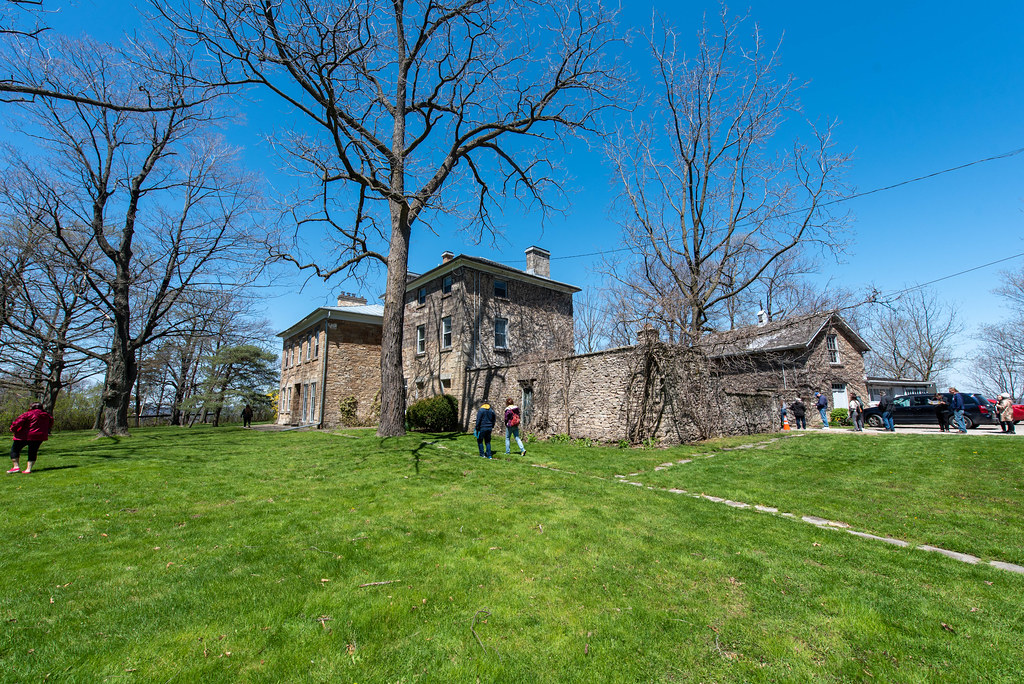
Nikon D750 – AF-S Nikkor 14-24mm 1:2.8G
Nikon D750 – AF-S Nikkor 14-24mm 1:2.8G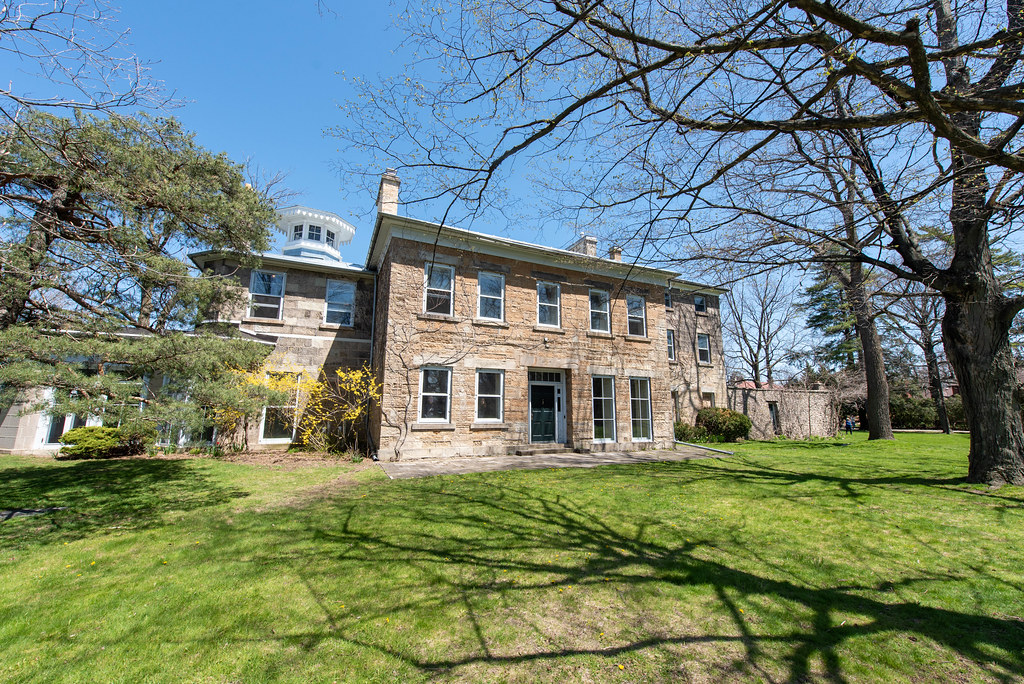
Nikon D750 – AF-S Nikkor 14-24mm 1:2.8G
Nikon D750 – AF-S Nikkor 14-24mm 1:2.8G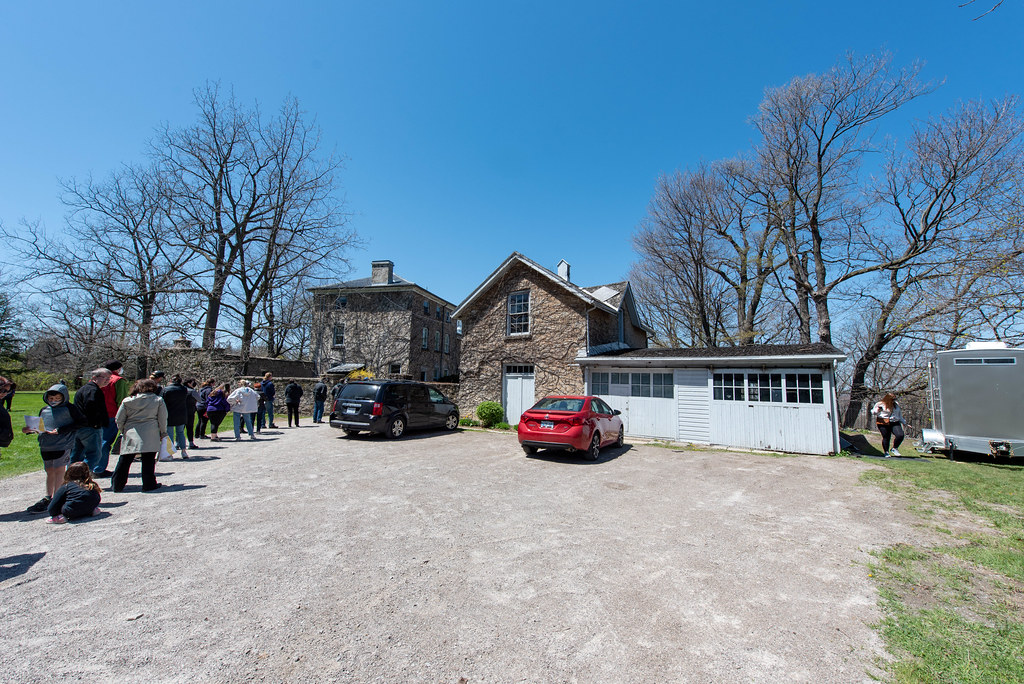
Nikon D750 – AF-S Nikkor 14-24mm 1:2.8G
The earliest known residents of where the Balfour house sits today were those of the Attiwonderonk, and archaeological evidence speaks to a small settlement on the peninsula of the Niagara Escarpment in the 12th and 13th centuries. Additionally, the Haudenosaunee and Anishinabek also occupied the land, and by the 17th Century, the Mississaugas of the Credit First Nation lived in the region. The region was ceded to European settlers in 1792 under Treaty 3 or the Land Between the Lakes purchase. In 1835, Scottish grain merchant Willian Scott Burn purchased a thirteen-acre lot for £100 (£13,537.92 or 21,640.84$ CAD in 2022). He constructed a stone manor house between 1836-8, a two-storey limestone manor home named Chedoke Estate. Burn continued to live at Chedoke until 1842 when an economic downturn forced him to sell the entire estate, both the house and the land. The property fell into the hands of Charles J Brydges, the general manager of the new Great Western Railway in 1853. Brydges contracted the expansion of the original 1835 manor house, building a three-storey east wing, a two-storey west wing and a decorative belvedere on the roof. The Brydges lived at Chedoke for nearly two decades before selling the estate to Plummer Dewar, another prominent merchant, in 1870. The Dewars lived at Chedoke until Plummer died in 1878. The remainder of the 19th-century history of the house is unknown, but it came back on the radar in 1909. William Southam would purchase the house as a wedding gift for his daughter Ethel May Southam and St Clair Balfour’s son-in-law. The Chedoke Estate became known as the Balfour house as the couple put in a series of renovations to update the house, including washrooms and hot-water radiators. William Lyon Somerville designed a sunroom added in 1920, and there’s a good chance that around the same time, electricity was added to the house. Both Ethal May and St Clair would live until 1974 and 1959, respectively, turning the ownership of the house over to their eldest, Wilson (Elizabeth) Baxter (nee Balfour), who in 1979 bequeathed Balfour house to the Ontario Heritage Trust. By this point, the original estate property had been well developed, including tennis courts and a stable. Additionally, two homes built in the 20th Century were also present on the grounds. Through the 1980s, sections of the estate were sold off for a modern sub-division development known as Chedoke Park Ravine Estates, which took over the two new homes, the tennis courts and the stables. The Trust would not come into that legacy until 2013, following Elizabeth’s death in February 2013.
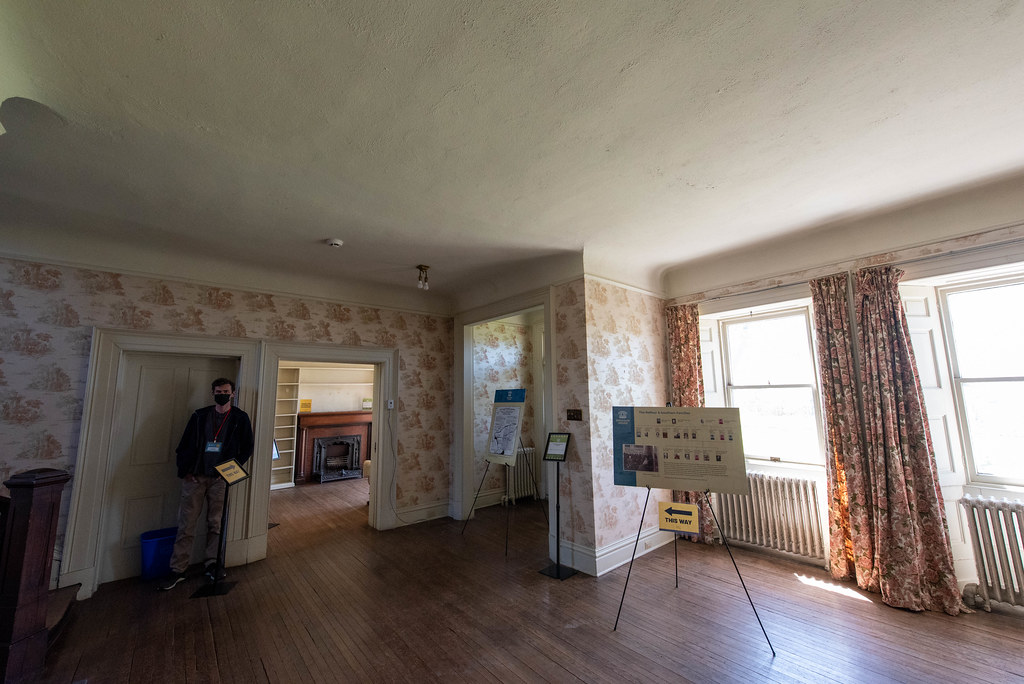
Nikon D750 – AF-S Nikkor 14-24mm 1:2.8G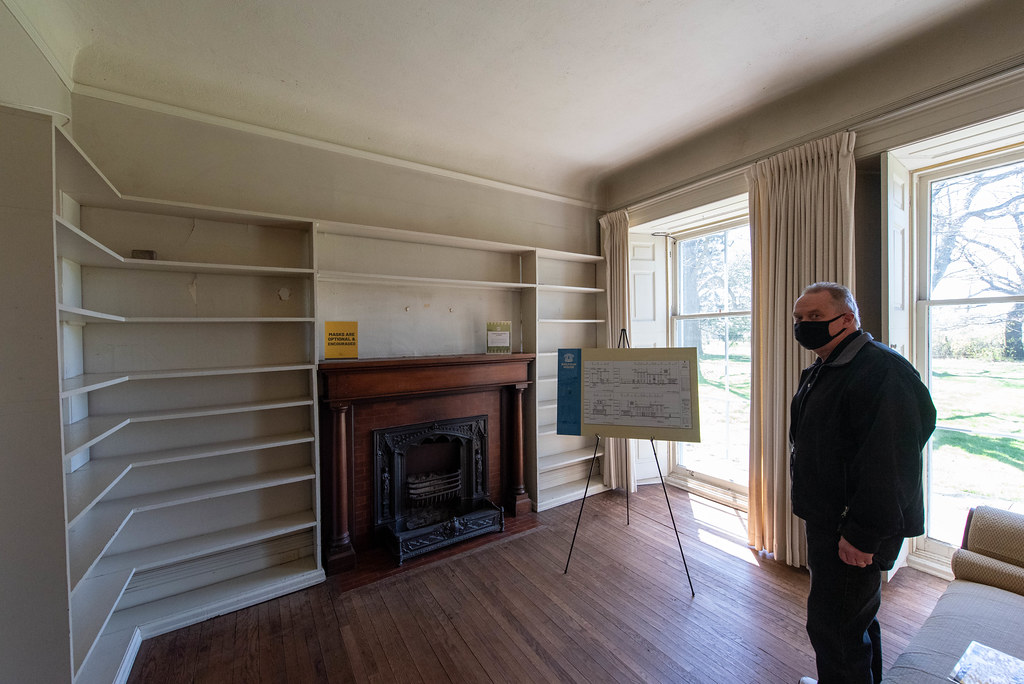
Nikon D750 – AF-S Nikkor 14-24mm 1:2.8G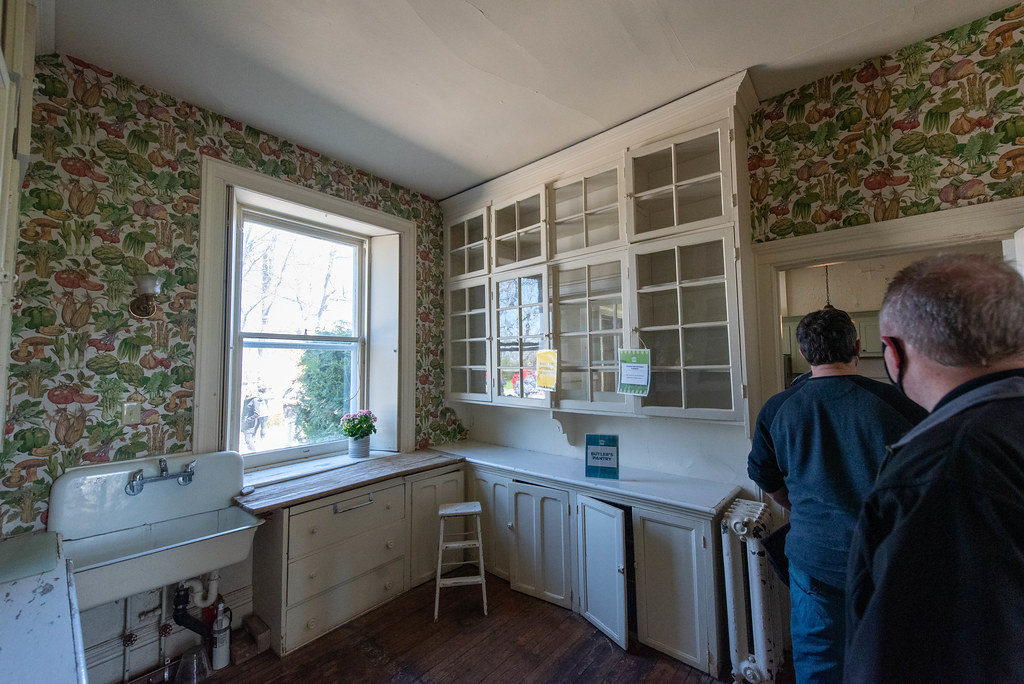
Nikon D750 – AF-S Nikkor 14-24mm 1:2.8G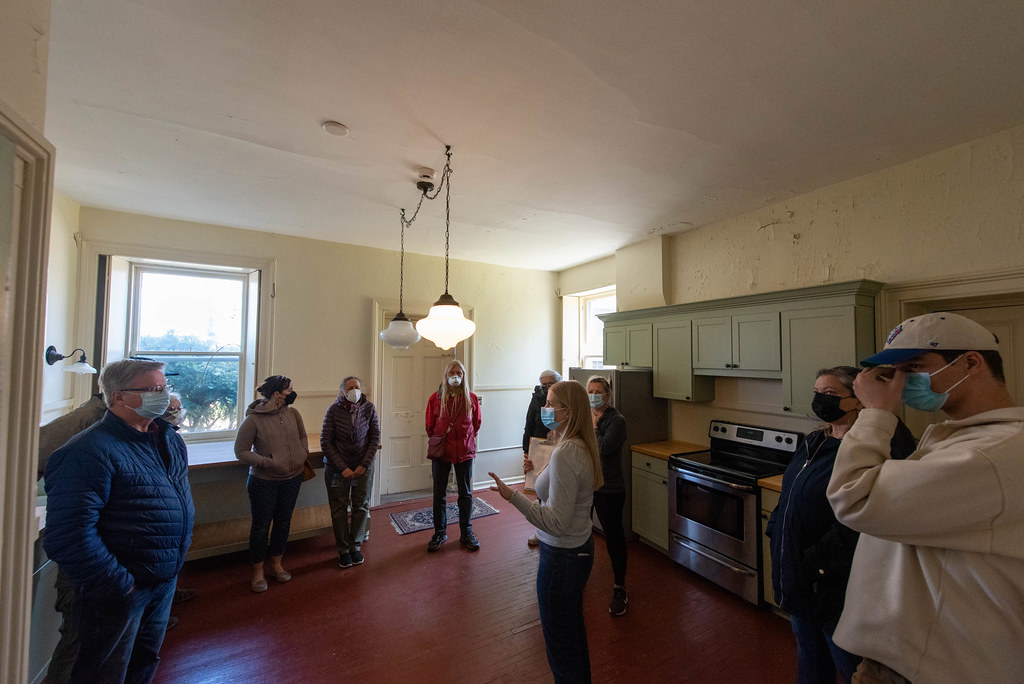
Nikon D750 – AF-S Nikkor 14-24mm 1:2.8G
Nikon D750 – AF-S Nikkor 14-24mm 1:2.8G
The original manor house would fall under the stewardship of the city of Hamilton following Elizabeth’s death, with the ownership remaining with Ontario Heritage Trust. The site sat empty while discussing what should be done with the home and the property. It wouldn’t be until 2022 that the religious think-tank Cardus signed a lease with the city and the Trust. Under the agreement, the remaining estate grounds would be open to the public while Cardus undertook restoration and renovation of the house for their purposes. While there is a chance that Balfour House may never be on the Doors Open list again, I hope that it does open its doors once the renovations and restorations are complete, as I would love to see what Cardus does with the historic home. If they don’t, I’m glad I got the chance now to see it has the home stands in 2022; you can see the full set of images over on Flickr, and you can check out the other two locations I visited at Doors Open 2022 in the separate collection.